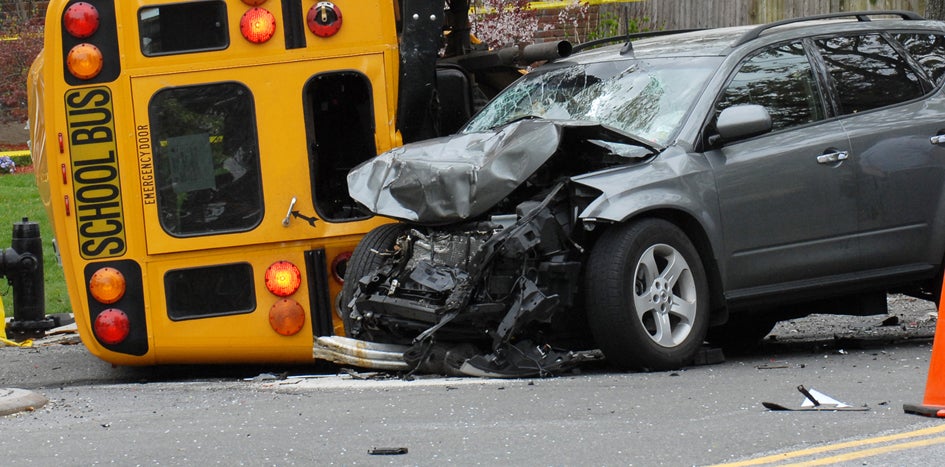Connecting the Dots Between Mental Health and School Risk Management
Now more than ever, educators play a critical role in classrooms beyond teaching kids to read, write, and do long division. Your team is part of a multidisciplinary support system helping kids navigate a spectrum of challenges: bullying, social isolation, abuse, food insecurity. Meanwhile, school employees might not get the support they need.
“Social and emotional needs of these kids are beyond anything we have ever experienced. It is mentally exhausting to attempt to serve as a teacher and mental health professional all day,” said one respondent in the 2022 Texas Teachers’ Poll.
The demanding education landscape can impact the emotional well-being of not only teachers but also administrators and support staff. The potential fallout isn’t limited to employee morale, productivity, and job satisfaction. Today’s mental health crisis can also drive up your workers’ compensation costs, expose your schools to liability, and instigate violent incidents.
Mental Health by the Numbers
Low pay, high stress, lack of work/life balance—the same factors driving teachers to leave the profession in record numbers are also chipping away at their mental health, and they’re not alone:
- 85% of principals experience frequent job-related stress. 2022 RAND Corporation Survey
- 84% of U.S. workers report that workplace conditions have contributed to at least one mental health challenge. Mind Share Partners
- In 2021, the suicide rate among children and young adults between the ages of 10 and 24 was the highest since 1968. Centers for Disease Control and Prevention
- Mental health challenges are the leading cause of death and disability in children between the ages of 3 and 17. 2022 National Healthcare Quality and Disparities Report
Related content: Districts Look for Ways to Address Student Mental Health
4 Ways Mental Health and Risk Management Overlap
Our friends at TASB HR Services say employee assistance programs, flexible workplaces, and on-site job coaches can boost morale and promote job satisfaction. But what's the connection between mental health and risk management?
Workplace Injuries
Nearly 100,000 teachers quit over the past two years. Hundreds of thousands more are poised to follow suit, but some will take a take a different path. Instead of resigning, employees suffering poor emotional health may do the bare minimum at work.
It's called quiet quitting, and it can compromise employee safety, according to attendees at the 2023 American Society of Safety Professionals' annual conference.
In the classroom, quiet quitting could mean teachers stop tutoring students off the clock and spending their own money on classroom supplies. In the context of your accident prevention plan, staff might stop reporting hazards and following safety procedures.
Workers’ Compensation Claims Costs
Injured employees who return under modified duty recover 30% faster and have a 7% reduction in medical expenses, according to the Tennessee Department of Labor and Workforce Development. Interacting with peers also promotes mental health. So do feeling valued and productive. Simply put, work is physically and emotionally therapeutic.
Sadly, the longer injured employees are away from the job, the more susceptible they are to stress, anxiety, and feelings of isolation. In an Institute for Work and Health study, 50% of injured employees who missed at least five days of work reported symptoms of depression in the year after their injuries. It all amounts to a catch 22 for employers and injured employees.
Working promotes physical and emotional wellness, but mental health issues could keep injured employees from returning to the team. The Texas Department of Insurance notes that employees who miss work for six months because of a job-related injury have only a 50% chance of ever going back. Meanwhile, the bill keeps growing for employers:
- Employees who suffer traumatic injuries with associated pain typically miss 45 days of work. If they are also depressed, that number nearly doubles to 83 days.
- You might have to hire temporary help or pay overtime to make up lost productivity.
- You also have to account for workers' compensation income and medical benefits. Your coverage provider pays those benefits, but the costs could trickle down in the form of rate increases when you renew.
Are Mental Health Claims Compensable?
Blanket statements about compensability cannot be applied to claims, whether they involve physical injuries such as back strains or emotional maladies such as PTSD. Your coverage provider investigates each claim and determines compensability based on the facts and state law.
With that said, here are a few scenarios in which mental health claims might be compensable:
- Campus police officer alleges PTSD after responding to a school shooting
- Angry student strikes teacher in the face and threatens her life
- Coach is injured in a head-on accident while transporting students, suffering multiple injuries and subsequent fear of driving
School Violence
There is no go-to profile of students or employees prone to violence, but the nonprofit organization Sandy Hook Promise counts emotional issues among the red flags:
- Chronic loneliness and social isolation
- Excessive irritability, lack of patience, or becoming angry quickly
- Persistent thoughts of harming themselves or someone else
Schools struggled to serve students’ mental health needs before the pandemic. Remote learning and its associated social isolation only magnified the gap between supply and demand.
More than 75% of schools surveyed last spring reported concerns about student depression, anxiety, and trauma. Sadly, the U.S. Department of Health and Human Services projects shortages of an array of mental health disciplines, including school counselors, by 2025.
Acknowledging the connection between mental health and violence, state law requires every school district to create a threat assessment team. Team members bring diverse expertise in fields such as mental health, education, and law enforcement, all working toward a common goal: Evaluate people who may pose a threat to themselves or others and respond appropriately. That could mean connecting them with mental health services, involving law enforcement, or both.
Related content: Legislation passed during the 2022-23 session requires employees who regularly interact with students to complete training on recognizing and supporting young people experiencing a mental health or substance use issue that might pose a threat to school safety. Learn more on the HRX blog.
Takeaways
Promoting mental health is no longer strictly an HR, school counselor, or employee benefits initiative. Staff and students need a multidisciplinary support system that includes risk management professionals. Consider how you can put these strategies to work in your schools:
- Train employees to recognize students who need mental health support and to respond appropriately.
- Promote your schools’ mental health services. Data from benefits services company Unum found that 93% of employers offer an EAP, but just 46% of employees know about the program.
- Invest in a return-to-work process that includes communication throughout injured employees’ recovery. Simply reaching out and asking how they’re doing can keep employees connected to the team. You might also identify roadblocks to recovery, including emotional issues.
- Leverage resources from the Texas Education Agency, National Alliance on Mental Illness of Texas, Occupational Safety and Health Administration.
- Make sure your staff, students, and families know about the National Suicide Crisis Lifeline. The service can be accessed by phone at 988 or online chat at 988lifeline.org/chat.

David Wylie
David Wylie serves as content developer on the risk solutions team. He brings more than 20 years' experience writing educational content that helps employers protect against workplace accidents, property damage, cybercrime, and other losses.
You May Also Like…
View All Related Insights
How To Manage and Mitigate Your Burn Risks
From bustling kitchens to science labs to maintenance and transportation shops, there are plenty of opportunities for burns to occur at your school or community college.

The Importance of a Thorough Accident Investigation
Conduct accident investigations to uncover the root causes of workplace injuries, correct them, and reduce the risk of similar injuries.

Fund Coverage 101: Intro to Cybersecurity Claims
Cybercrime is big business, and schools are tempting targets. Fund Privacy and Information Security coverage pays for covered claims, including incident response when appropriate.

Complete These District Audit Report To-Do’s Before Summer Break
Districts should conduct climate surveys and intruder assessments while stakeholders are accessible and staff, students, and visitors are coming and going.
